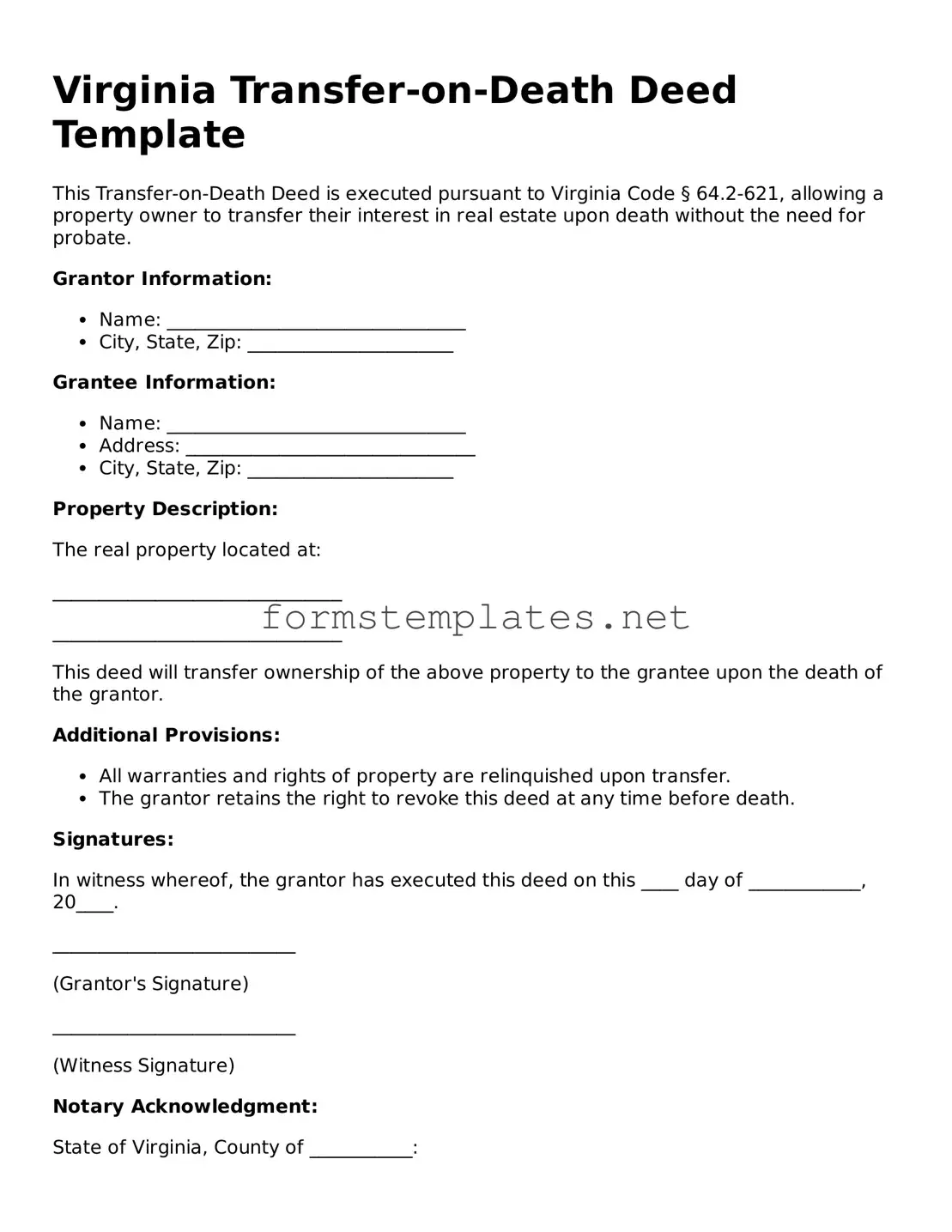Virginia Transfer-on-Death Deed Template
This Transfer-on-Death Deed is executed pursuant to Virginia Code § 64.2-621, allowing a property owner to transfer their interest in real estate upon death without the need for probate.
Grantor Information:
- Name: ________________________________
- City, State, Zip: ______________________
Grantee Information:
- Name: ________________________________
- Address: _______________________________
- City, State, Zip: ______________________
Property Description:
The real property located at:
_______________________________
_______________________________
This deed will transfer ownership of the above property to the grantee upon the death of the grantor.
Additional Provisions:
- All warranties and rights of property are relinquished upon transfer.
- The grantor retains the right to revoke this deed at any time before death.
Signatures:
In witness whereof, the grantor has executed this deed on this ____ day of ____________, 20____.
__________________________
(Grantor's Signature)
__________________________
(Witness Signature)
Notary Acknowledgment:
State of Virginia, County of ___________:
On this ____ day of ____________, 20____, before me, a notary public in and for said county, personally appeared ______________________, who is known to me or proven to me on the basis of satisfactory evidence to be the person whose name is subscribed to the within deed, and acknowledged that he/she executed the same.
Given under my hand and seal this ____ day of ____________, 20____.
__________________________
(Notary Public)
My commission expires: ____________
